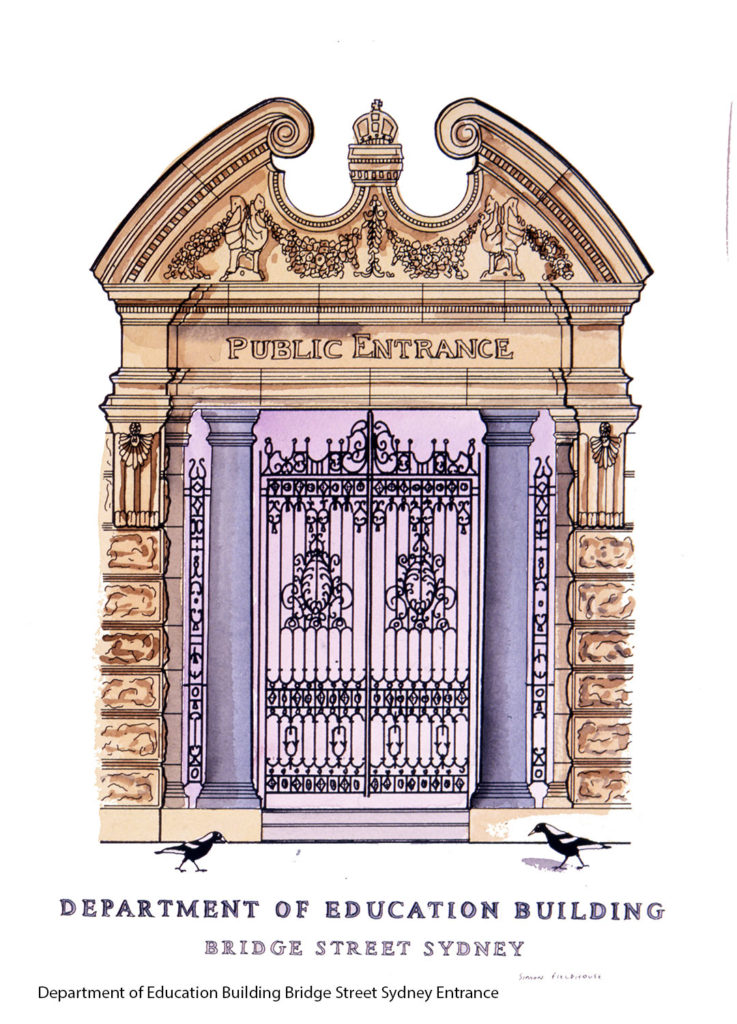
Department of Education Building Bridge Street Sydney
Department of Education Building Bridge Street Sydney occupies an entire city block, bounded by Bridge, Loftus, Bent and Young Streets and Farrer Place in central Sydney, New South Wales, Australia. Its four detailed sandstone walls were designed to dominate the precinct. The site is the longest official seat of the head office of the New South Wales government education administration. It has been occupied since 1881, even though the department vacated the Bridge Street building late 1989 and returned in April 1996.
Bridge Street; where the building currently stands proud makes reference to the early days of settlement when a bridge was built across the Tank Stream. The water supply storage tanks were purposely built by convicts to hold fresh water used by early settlers. It linked Pitt and George Streets. As a matter of fact, Bridge Street was the site of the first canvas home of Governor Arthur Phillip and of Government House, the first European building in Australia.
Under this surrounding of Government buildings, the construction of the Education building was initiated in two stages: Firstly, George McRae started the construction of the northern half of the Department of Public Instruction, now the Department of Education building using the Edwardian Baroque design. In 1901 when the Royal Australian Historical Society was founded met in a number of different venues and was eventually provided with rooms in the Department of Education building in Bridge Street.
McRae, who was named a City Architect in 1887 and later became government architect, had already worked finalising the Sydney Town Hall. McRae also added to his curriculum two Sydney monumental buildings: the Romanesque style of the QBV façade (c.1898) and the Edwardian Baroque style (also known as Federation Freestyle or Neo Baroque) of Central Railway Station or Sydney Terminal (c.1924).